Naturalist’s Notebook: July 26 – August 01.
In addition to the birds that feed on small, schooling fish (gannets, shearwaters, gulls, and terns), there is a seabird that thrives by feeding on plankton. The Wilson’s Storm Petrel appears tiny from the whalewatch boats but it is actually the size of a robin. Its plumage is dark, above and below, with a white rumppatch. It flies with a moth-like wingbeat, mere inches above the surface of the water, pausing when it has found a patch of plankton. It finds its plankton by scent and, hovering low over the surface of the water, stirs the plankton up with its feet before picking out individual plankters with its bill. As you can imagine, this process looks very much like the bird is walking on the water. Thus, for centuries, the fishermen have referred to them as “Jesus Birds.” And the name, “petrel,” refers to St. Peter.
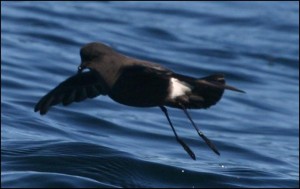
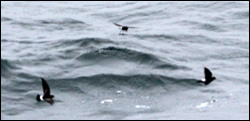
Interestingly, their feathers have quite a high oil content. If you think about it a little, it does make sense. The oil floats on water, allowing the birds to do so, as well. I am told that it was a fairly common practice among the whalers to catch petrels and place their bodies on the end of a stick. Once there, the birds could be lighted and serve for a fairly long time as a torch because of all of their natural oils.
For a tiny bird, this animal has a very long migration. The birds that we might see from whalewatches out of Cape Cod, winter out at sea and nest in hollow burrows on the Antarctic coast.
They are difficult to count from a boat, yet scientists believe they are the most populous birds on the planet.
Petrels are not the only larger animals competing with Right Whales for copepods. The Basking Shark, also makes its living by feeding on very tiny animals. In some places reaching lengths of nearly forty feet, this is the second largest fish on the earth today. It is generally gray with a short snout and tiny teeth. When feeding, it swims along with its mouth open, allowing a greater amount of water to pass over its gills and the gill rakers that stem from the gill arches.
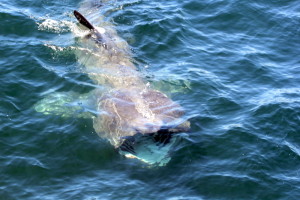
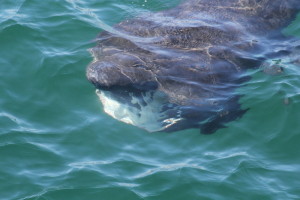
Because they feed on similar prey items, they are commonly seen where Right Whales and Sei Whales are feeding. And where feeding patches of sand launce are found. Like the Right Whale, harpoons were used to harvest them for their oil.
Nearly every day this week, there were reports of three species trips. Most were reporting sightings of humpback whales, finback whales, and minke whales. Nancy Scaglione-Peck reported on July 28, “Honestly, 2nd trip had too many whales to count! 70+. Seriously!” On that trip, she reported 30 to 35 minke whales and 20 to 25 finback whales and 16 to 19 humpback whales. These are huge numbers and, let me make this clear, you should never expect to see this many whales on your whalewatch trip! Those of you that have been whalewatching in the past know that nothing you saw then will have anything to do with what you might see the next time you are out. You should always whalewatch with reasonable expectations, like having a nice boat ride and maybe seeing a couple of whales. I don’t say that because you won’t see large numbers of whales. The trick to any of life’s pleasures is to go into it with reasonable expectations. If you allow the experience, your first encounter with a whale can be a life altering one. And so can every encounter afterward!
And you can take that from a naturalist that has been on nearly 5000 whalewatch trips in his career. I remember my first time very clearly. I came to the Cape with the biology club from the Pennsyvania university that I attended. We spent the weekend in Nickerson State Park and went whalewatching while we were here. We saw minke whales and finback whales and humpback whales, the numbers of each have faded among my memories. The most memorable part was when the right whale mother brought her calf to the boat for us to “babysit” while she went a little way off to feed on copepods. I was hooked!
And in 1995 when I came here to work for the Whale Video Company, one of my first adventures videotaping whales was an incredible look at a finback whale rising just ahead of the bow of one of the boats. I was so in awe that I forgot to put the camera up to my eye to record it for everyone else (sorry Dan). That was the only whale we saw that day, and yet, it sticks out in my mind as one of the highpoints of my career. Why could that happen? Because I did not expect a repeat of the first whalewatch trip I went on.
In each of my introductions, regardless of who the passengers are, I make a point of telling them that we are going into a wild, dynamic marine environment and we are looking for wild animals. That they would be where they are and doing whatever they are doing whether or not we were there to see them. IT IS NOT A ZOO OR AN AQUARIUM. And that is precisely why it is a Marine Science ADVENTURE. That is why it remains fun after more than twenty years.
Funny story, but promise you won’t tell. My first trip as a naturalist. I don’t remember what we saw at all. I was so worried about sounding like a reasonably informed naturalist that the phrases I wrote on my hand to talk about smeared. At the end of the day, I couldn’t even remember if we had seen whales on that trip.
But I digress. Large numbers of various kinds of whales were seen pretty consistently this week, as were various feeding and surface active behaviors. The one thing I feel the need to talk about is the report from Ellie Moody on July 31 that there were “small boats moving over whales, setting fishing gear on whales, and [people] jumping off of boats into the water with breaching whales.”
The truth of the matter is that anybody who spends time on the water wants to see whales. The truth also is that we are moved to protect what we love, we love what we have come to understand, and we understand what we have encountered (what we have seen). With that in mind, I firmly believe that every person on this planet should see a whale in its natural environment. And that they should do so with a boat operator that has a little respect for what he is doing.
Whether you go whalewatching on a hundred foot boat or an inflatible raft, there are guidelines in place to protect not just the whales but yourself as well. Lets make it simple, you wouldn’t try to drive your car over the top of another one. Why would you drive your boat over a whale that is bigger than it? Some fishermen have felt for a long time that “fishing the whale” greatly improves your chance of getting a tuna. But, tuna of profitable size, don’t eat sand eels. Pulling your lines over a bubble cloud only increases your chances of loosing your tackle. Both of these are just kind of a little stupid. But the one that just blows my mind is the idea that a 200 pound human being can somehow survive being landed on by a 40 ton (eighty-thousand pound) humpback whale. On the boat and in the other positions I have found myself in, just like most of you, I have to refrain from pointing out things that are just f***ing stupid. Sometimes, you need to throw being sensitive and politically correct asside and point out to someone that their actions are, frankly, too stupid for them to have much chance of surviving. If you have found that last statement offensive, I do apologize, but also wonder when you will be jumping under a breaching whale.
And it’s not good for the whale either.
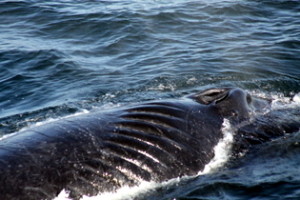
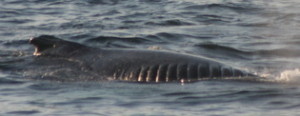
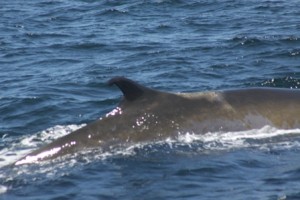
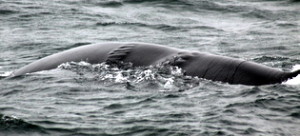
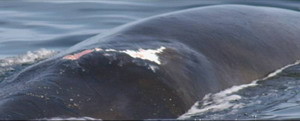
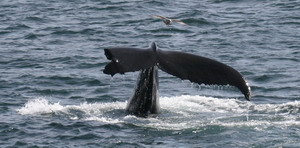
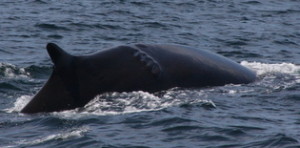
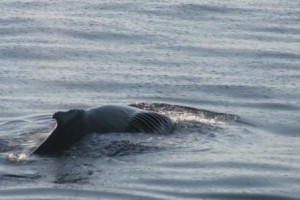
When you are on the water, please keep in mind that these animals are living things, deserving of our protection and our respect.
If that’s not enough, keep in mind that they are almost all endangered species and any act that has the POTENTIAL to change their behavior can be considered a violation of the Marine Mammal Protection Act and the Endangered Species Act.





